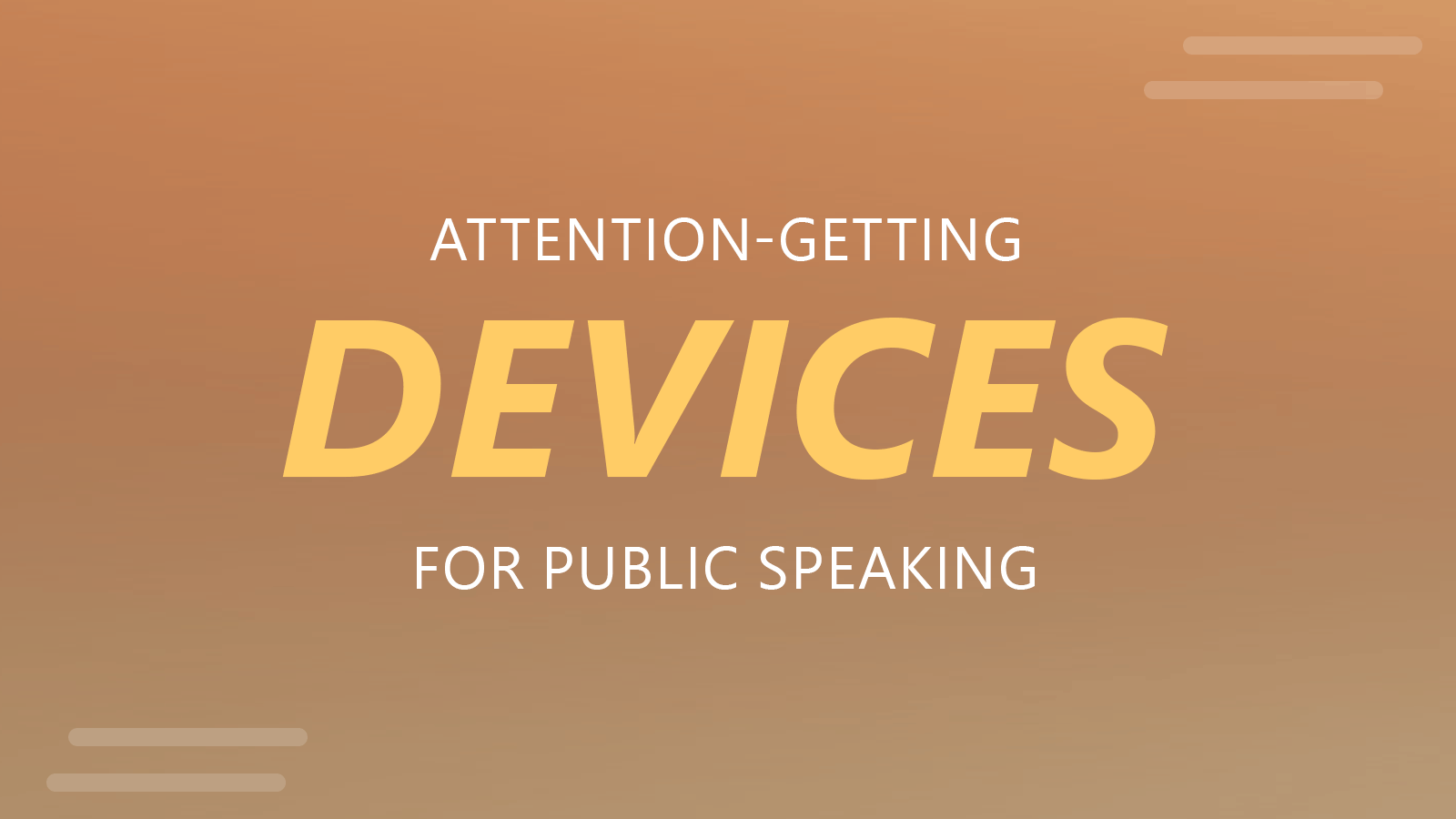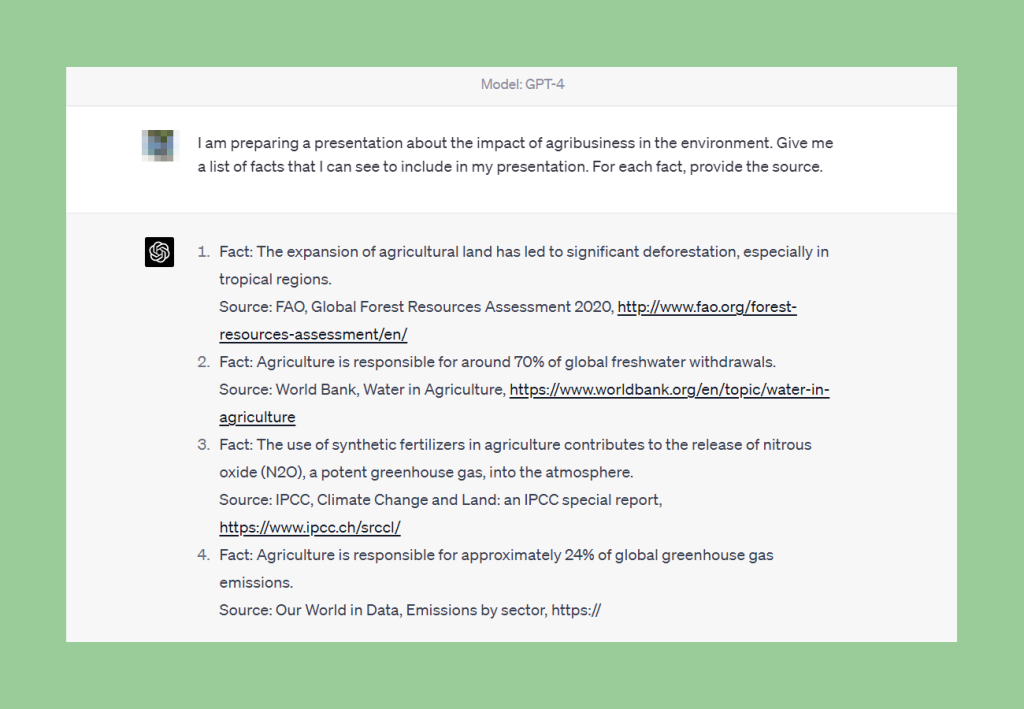Attention-Getting Devices for Captivating Public Speaking

Public speaking is one of the most significant attributes of successful entrepreneurs and business professionals. When there is a need for a specific message to be conveyed to a desired audience, public speakers play a crucial role in achieving this purpose. However, an audience that does not engage with the speaker right from the start can not get the proper idea or message behind a speaker’s speech.
A meaningful and powerful speech is delivered by those speakers who know how to keep their audience engaged throughout their speech or presentation. That is why attention-grabbing devices are prevalent among prominent public speakers worldwide to maintain the interest and attention of their listeners through the first sentences of their speeches or presentations. In this article, we will shed light on what attention-grabbing devices are, how to create attention-grabbing devices for your specific speech or presentation, and what are useful, practical examples of attention-getters, attention-grabbing devices (a.k.a AGD). We will also present an example of device to attract momentary attention.
What are Attention-Grabbing Devices (aka Attention Getters)?
Attention-grabbing devices or attention-getters are specifically used by influential speakers to capture the interest and attention of their listeners right from the beginning. When the audience is engaged from the very start, there is a good chance that the desired message of a speaker will be delivered effectively to any type of audience with subsequent positive results.

According to Duarte, the Glance Test reveals that a speaker always has three seconds to capture his audience’s attention. Hence, based on Duarte Glance Test, it is very important for presenters and public speakers to resonate with their audience right from the beginning.
Why are the Attention-Grabbing Devices Important for Your Speech or Presentation?
It is not possible for a public speaker to convey his message properly to listeners who are not paying attention to his speech. Without the focus of his audience, his message will not be conveyed and received effectively. This will compromise the overall purpose of the speech being made and the relevant stakeholders will hold the speaker responsible for the ultimate results. That is why, attention-grabbing devices come in very handy as they boost the morale of the public speaker right from the start and enable him to capture the attention of his listeners through his very first sentence.
If you are making a sale or marketing your product or service, it is important for you to hook your desired audience from the starting sentence of your presentation. If they pay attention to you, they will likely respond to your desired call to action. Resultantly, attention-grabbing devices can help presenters in converting listeners into customers.
Factors to Remember for Attention-Getting Devices
Being a speaker and presenter, you must be familiar with some basic aspects and factors that can highly influence your attention-getters and how you deliver your speech. Some of them are given as follows.
- You must use a proper tone of speech.
- Your audience will play a deciding role in your success or failure as a speaker. You should be aware of the background, needs, desires, and possible demands of your listeners.
- Your topic of speech must be concise and clear to you.
- Your speech’s purpose must be well-defined.
- If you are willing to share some personal information or experience, you must deliver them as per the purpose of your presentation and the needs of your audience.
6 Types of Actionable Attention-Grabbing Devices (with useful Attention Grabbers Examples)
There are several types of attention-getters that a speaker can use to maintain the interest of his listeners during his speech. However, a few of them outshine others. Here are the six most actionable attention-grabbing devices that a speaker can leverage to capture the attention of his audience and engage them from the very beginning of his speech.
1. Anecdotes
Anecdotes can be regarded as short, yet attention-grabbing stories that a speaker can use to start his presentation or speech. These anecdotes can be personal, historical, and even hypothetical, depending upon the situation, the topic of the presentation, and the interest of the listeners. If you have prepared a 5-10 minute long speech, you can start with a 15-30 seconds long story at the beginning of your speech.
A personal trainer, for example, can start with a story of one of his previous clients. He can elaborate on how he helped his client who used to fail in achieving his set milestones in becoming successful in his desired field in just three months.
The personal coach can tell the stories of hardships that he faced while working with his client. He can quote a famous historical incident as well to make his argument more believable and relevant. The goal is to engage with your audience through the medium of a story so that you can resonate with their thoughts, feelings, and emotions right from the beginning. The storytelling approach is one of the most important and useful attention-getting devices that a speaker can incorporate into his speech.
2. Quotations
Quotes are powerful attention-getters if used properly. If the speaker starts his presentation with a famous quote or quote of a well-known public figure or personality, he can inform his listeners about the theme of his presentation right from the beginning. If the quote has an emotional touch, it will be more beneficial for the speaker as the listeners will be emotionally associated with the speaker irrespective of the topic of the speech.
For example, if the audience’s background is related to science and technology, the speaker can start with famous quotes from the personalities like Albert Einstein, Stephen Hawking or Carl Sagan, etc. The more relevant your quote is, the more feasible it will be for you to maintain the interest of your audience throughout the speech.
3. Surprising or Bold Statements
Why will your audience not listen to you if you surprise them from the very beginning of your speech? Bold or surprising statements can also leave a profound impact on the minds of the listeners and act as effective attention-grabbing devices. You can start with a startling sentence that contradicts the general opinion of the people about something or say something that people may find hard to believe. Once you do this, your listeners will promptly get focussed on your next sentence as they would like to know further details to clear their doubts. This bold statement will act as a remarkable hook to engage your audience from the very first sentence of your speech.
You must support your surprising statement with some sort of solid, and believable evidence as well to maintain your credibility and further motivate your listeners to stay focussed. If you are delivering a presentation about extraterrestrial life, you may start with pictures of ancient water flow patterns on planet Mars, etc. The purpose is to say something bold and good enough to be supported by some solid facts and figures.
You can use pictures, infographics, and other forms of visual aids to support your speech to make your arguments more captivating and your presentation more engaging. If you are a presenter and have used PowerPoint to develop your presentation, you are in luck. You don’t need to design your slides, prepare compelling illustrations, graphs, tables, and infographics slides from scratch yourself as our website Free PowerPoint Templates is offering thousands of premade free preentation templates filled with all of your desired visuals and graphical content. You just need to download the template of your desire, edit it a bit as per your custom requirements and you are good to go. Now, you can worry less about the presentation development and design and focus more on how to achieve your desired purpose by using the most suitable attention-grabbing devices.
4. Questions
If you want to engage your audience with a touch of curiosity, you can ask questions right from the start of your speech. After asking a question, the audience will try to develop their own opinion and answer the question accordingly. Ultimately, they will be willing to hear what you have to say about their answer and whether they were wrong or right in proposing a more suitable answer. When the speaker supports his questions with relevant and evidence-backed answers, the listeners become more attentive and focused. You can ask rhetorical and response questions as well.
For example, if you are presenting your product to potential clients with a slide deck presentation, or presenting your company with a company profile presentation, you can ask them about the most desirable feature of the product being presented. The idea is to stimulate interest among your listeners. Ultimately, the focused audience will likely respond positively to the offer being presented by you.
5. Jokes and Humor
Being a presenter, you may need to entertain your audience in order to win their attention and ultimately, trust. Hence, the usage of jokes and humor in your presentation may come in very handy in such scenarios. Jokes and humor are part of the possible attention grabbers for speeches. When you open your speech with a joke or humorous statement, the audience enjoys your speech from the very sentence and becomes convinced to listen to your remaining speech so that they can get a bit more enjoyable experience. However, you need to be aware of the types of appropriate jokes that you can make without offending any possible member of the audience.
For example, if the topic of your presentation or speech is a bit rough and serious, you can ease some tension in the environment with a suitable joke in the right tone. Jokes can be really helpful in getting the attention of the listeners belonging to a new location or a specific group. By tailoring your joke to the issues being faced by your audience or the desires of your listeners, you can signal to your audience that you care about their focus and trust. Your jokes should be funny, relevant, and in accordance with the taste of your prospective audience.
6. Statistics & Facts
If you want to ensure that your audience sees you as a credible person in your topic of speech, you can start with relevant statistics, facts, and figures. Statistics depict that you are going to present something that is well-balanced, believable, and authentic. By opening your speech with a relevant fact or statistic, you can win the trust of your listeners. By using an unexpected fact, you can stimulate more interest in your listeners as they will assume that the whole presentation is going to be intriguing.
For example, if you are going to talk about the best practices in workplaces, you can share the revenue and growth statistics of some of the top businesses in your domain of work and explain how their routine activities have contributed towards their growth and development. The main theme is to provide evidence to your audience before you try to convince them or present your opinion.
If you are presenting on a diverse topic, you can still find helpful statistics from research studies, or publications. A pro tip here would be to use ChatGPT to brainstorm some ideas and get statistics and facts about a specific topic.

Recent Research Studies: The Influence of Short Attention Spans on Public Speaking
Recent studies on the increasingly short attention spans of modern audiences have further emphasized the importance of using attention-grabbing devices in public speaking. In today’s fast-paced, digital world, people are often bombarded with information, making it crucial for speakers to capture and retain their audience’s attention from the very beginning. By incorporating attention-getting techniques into their presentations, speakers can effectively counteract the impact of short attention spans, ensuring that their message is not only heard but also remembered by their listeners. This highlights the growing need for presenters to be adept at utilizing attention-grabbing devices and adapting to their audience’s needs in order to deliver a powerful and engaging speech.
One well-known study in this area is the 2015 Microsoft study that found that the average attention span of people had dropped from 12 seconds in 2000 to 8 seconds in 2015. This study suggests that the digital age, with its constant stream of information and stimuli, has contributed to shorter attention spans. The report is titled Attention Spans report and was conducted by Microsoft Canada.
Final Words
Attention-grabbing devices or attention-getters are crucial for grabbing the focus and trust of the listeners right from the beginning of speeches and presentations. All prominent public speakers and presenters use actionable attention-grabbing devices to persuade their audience to remain focused throughout their speeches.
A well-engaged, and focused audience will help the speaker to convey his message more effectively and achieve his desired goal in a more efficient manner. In order to use any attention-grabbing device in your speech, you must be aware of your audience, your speech’s topic, and the overall goal of your speech.
There are several attention-getters that can be used by successful public speakers and presenters, however, anecdotes, quotations, bold statements, arousing questions, jokes, and authentic statistics can prove to be much more valuable when it comes to captivating your audience and winning their trust from the very first sentence of your speech or presentation.
